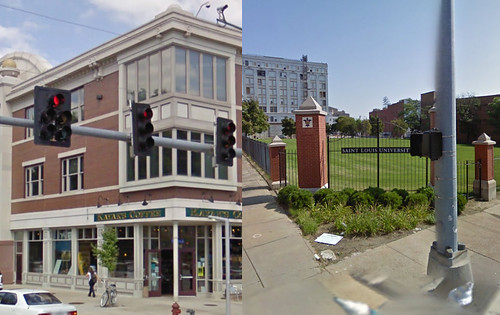 Recently the St. Louis Post Dispatch ran a three three part series entitles Can St. Louis Compete. In the final article, Time to Act is Now, cited a key factor in the ability of the St. Louis region to grow its work force and population: retaining a greater percentage of the 23,000 college students that earn a four-year degree in the St. Louis area every year, many of which come here from other metropolitan areas.
Recently the St. Louis Post Dispatch ran a three three part series entitles Can St. Louis Compete. In the final article, Time to Act is Now, cited a key factor in the ability of the St. Louis region to grow its work force and population: retaining a greater percentage of the 23,000 college students that earn a four-year degree in the St. Louis area every year, many of which come here from other metropolitan areas. The key to doing this is getting students engaged in the community that surrounds the universities, making students feel "at home" and invested in their surroundings. When they graduate, if students have built an appreciation for St. Louis, more might be likely to stay here instead of moving on to other regions.
While there are many facets to how a university can sell its students on St. Louis, how the university treats it surroundings chooses to invest outside the campus proper can play large role in how students perceive the city around them. Looking at how two of the regions top colleges, Washington University and St. louis University interact with their surroundings, there is a severe contrast. Wash U invests heavily in the communities around both the main and medical campus, whereas SLU responds to the city surrounding its campus' by removing it; demolishing buildings and replacing them with either surface parking or empty grass lots, creating isolated fenced compounds for its students.
The business section of Friday's Post highlighted some of Washington University's outreach and investment in its surroundings including the renovation of an underutilized building at Delmar and Skinker (photo above) for student housing over retail space. For years Wash U has purchased and maintained dozens of historic apartment buildings in both St. Louis and University City through its subsidiary Quadrangle Housing. Many buildings in the Parkview Gardens neighborhood north of the Loop that were once burned-out, abandoned and boarded are now home to Wash U students. While the Loop has lost its reputation as an edgy cool place to hang out that my friends and I enjoyed in our youth, the influx of Wash U students living in the area has been a contributor to the areas revitalization. The environment that exists in the Loop today no doubt has an effect on Wash U students here from out of town and I would speculate that living and interacting with the neighborhoods around the campus has contributed to some students decisions not to leave the region after they graduate. Another thing that WU does to encourage students to interact with the city is providing them with free Metro passes. I am not sure if SLU does the same.
In contrast, in location after location St. Louis University has acquired properties around its main campus, removed buildings and left fenced vacant lots or asphalt parking lots in its wake. Instead of investing in the areas around campus, most of SLU investment has been in increasing the size of its compound and in the process reducing density creating a sterile office park or even prison like feel with its ubiquitous black fences. Instead of nurturing what is there and adding to it, SLU's mentality when it has contemplated investing in mixed use development outside its walls has been clear cut and wait for a big project to magically materialize. A significant example of this it the intersection of Grand and Lindell. SLU bought the historic Marina building on the northeast corner and instead of renovating, kicked out the remaining tenants, demolished it and a neighboring building then even after receiving numerous proposals for development, failed to spur anything to happen there during the most favorable real estate development market in decades. Now even as the economy begins to sputter back to life, it will likely be years before anything happens there. This failure could have been an opportunity to link its students to Grand Center and help re-activate that area, instead it perpetuates isolation of the university from the City around it.
On the southwest corner of the same intersection, SLU bought a bank building (that was a historic structure hidden under a layer of plain stucco) and demolished it for a lifeless plaza and fountain. Over on Locust and Washington, east of Grand, SLU demolished several buildings including a historic livery stable for surface parking lots, cutting an asphalt moat between its students and the revitalized Locust Business District that has emerged in recent years with a series of small developments.
and a block of Josephine Baker that SLU removed (now grass)
What kind of message does SLU's development (or should I say destruction) mentality as well as its fear induced iron fence barricades send to its students about the City around them? How many students move away after their experience at SLU because they have come to think about St. Louis as a reflection of the lifeless surroundings around SLU's main and medical campus'? Fortunately, private developers such as the Gills and Jasson Johnson have capitalized on development opportunities, attracted students to live off campus and created nodes of activity near St. Louis University.
It may be possible that SLU is slowly changing their tune about how it invests in the neighborhoods surrounding them. Steve Smith of the Lawrence Group has gotten SLU to be an investor in a new boutique hotel where Olive splits off from Lindell Boulevard, and over on Locust, SLU is renovating two small buildings east of the Livery Stable location that many feared would come down for more parking. Lets hope this effort is not to little, too late.

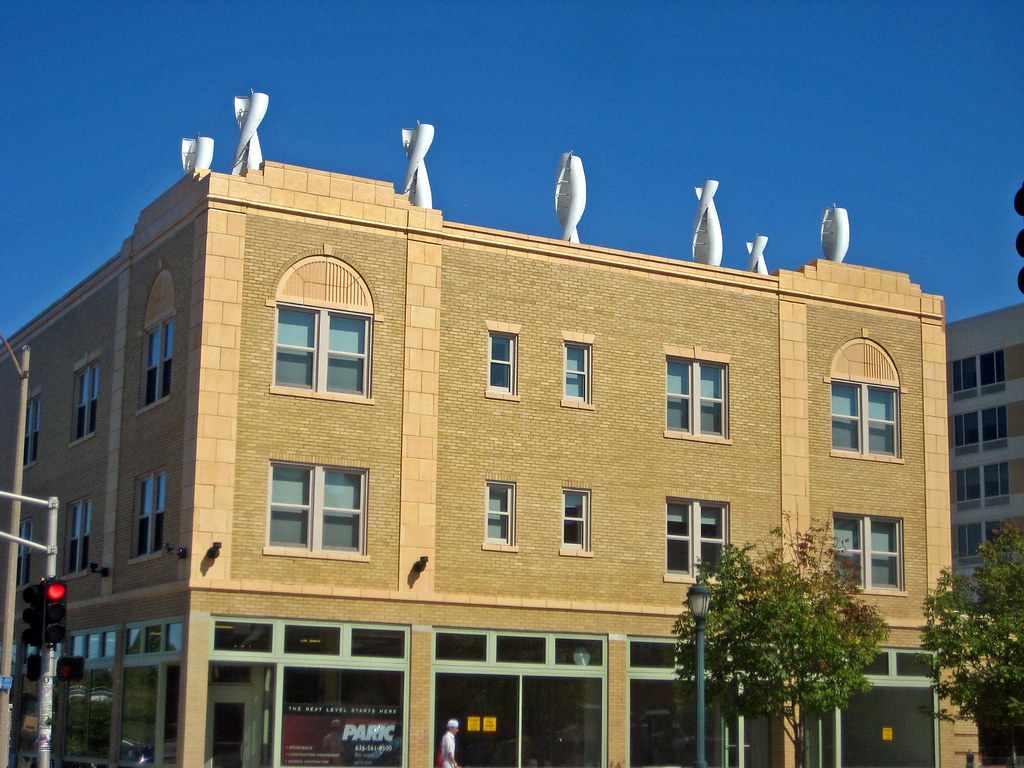
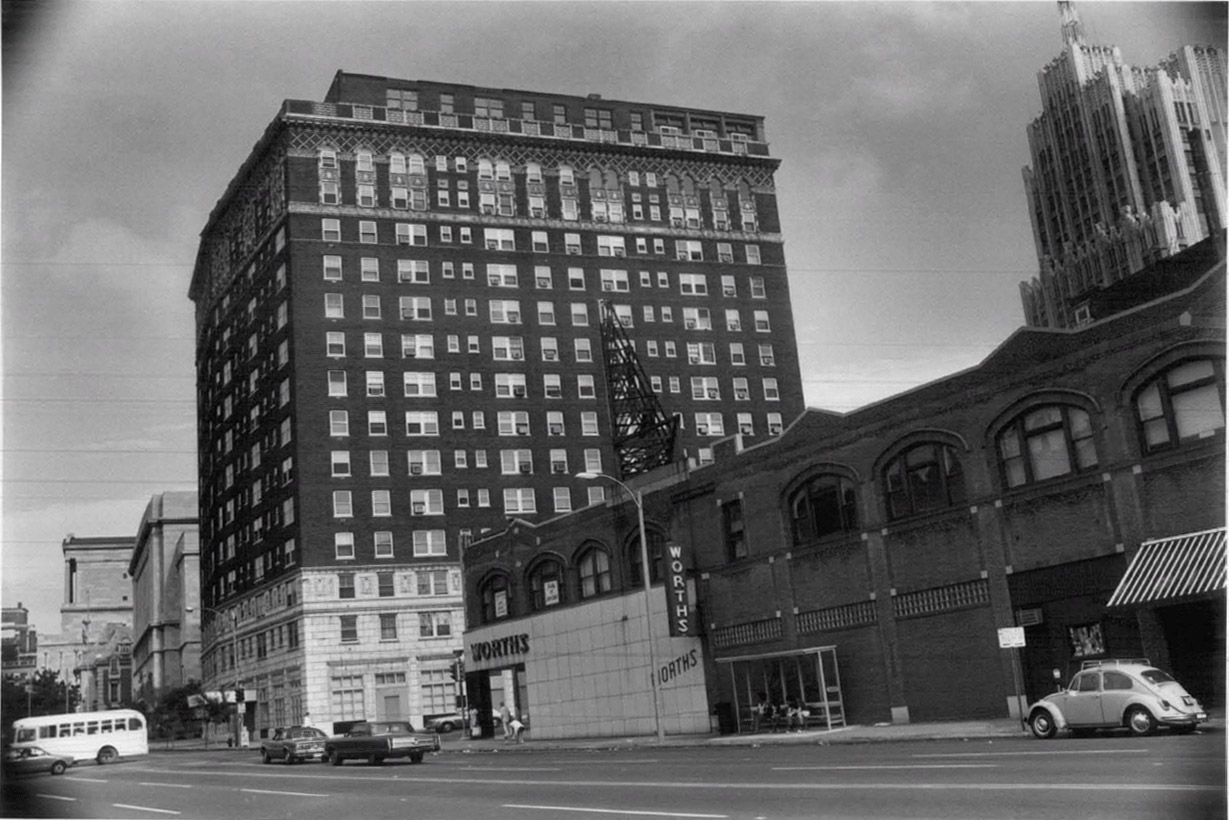
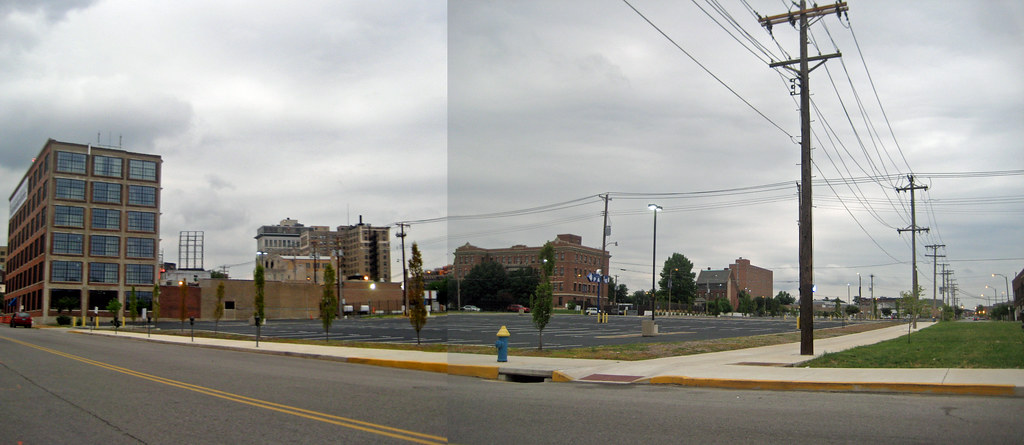
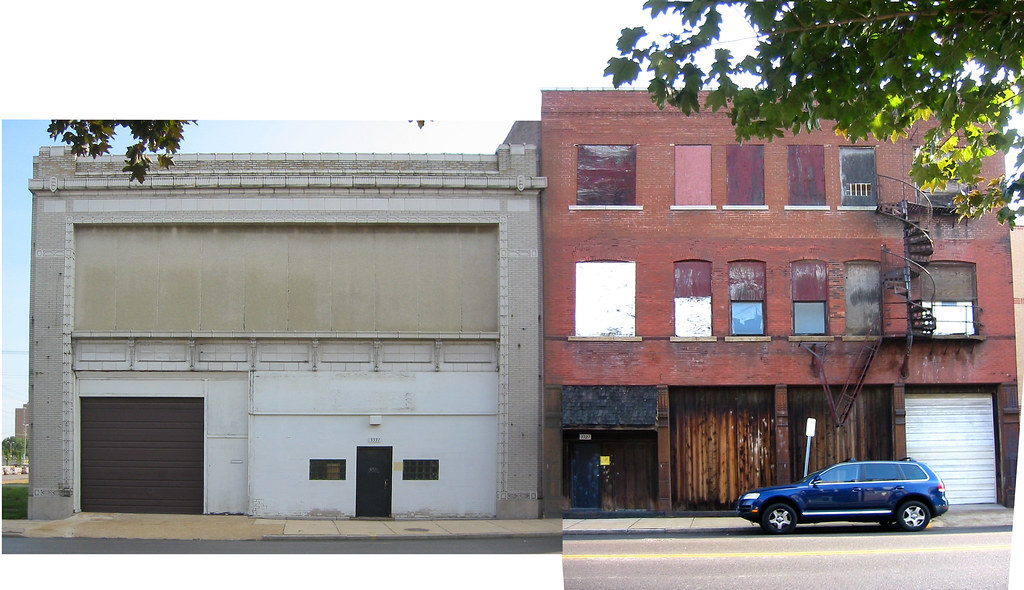
15 comments:
Excellent post, Paul. The area around SLU, with a few exceptions, is lifeless and depressing. There's no reason that Grand Blvd- once the busiest street in the entire city- should not be vibrant with pedestrian activity. Midtown is literally the center of the city, connecting downtown to the CWE and the North Side to the South Side. There is a built-in student population, a huge employment base and plenty of transit connections. Yet, on an average day, you can practically see tumbleweeds. Hardly any retail, and aside from special events, empty sidewalks. The "Center of Art & Life" is a civic embarrassment.
In contrast, the areas around Wash. U are among the most desirable in the region. Love it or hate it, The Loop is the most bustling district in the entire metropolitan area, and the neighborhoods of Skinker-DeBaliviere, U. City and Clayton are pleasant, historic and walkable.
It's the fortress mentality taken by SLU after it took the "most dangerous campus in America" label back in the early 90's too personally.
Ouch! What a post, and good comments. I moved away soon after finishing at Wash U and regretted it immediately. I do feel a long-distance bond with the city, although it's mostly U City, not St Louis proper, filling my memory bank.
Sodality Hall, which once stood on Grand, just north of Laclede, was another great looking building that SLU tore down.
I very much miss the Marina Building, having regularly patronized Bullfeathers Pub, Golden Dynasty, and the original Vito's back in the day. It could have easily been renovated, despite SLU's claims that it was beyond saving. The university's plans for the Grand-Lindell lot are way too grandiose; I'd be perfectly fine with a new 2-4 story mixed use building there as opposed to a pie-in-the-sky highrise
Ok Mike-- stop the Washu Lovefest. I think SLu had a little further to go dont you? Look I think WASHU does a good job dont get me wrong-- and I think Fr. B shouldnt have torn down some of the stuff he has-- but as someone who has seen both-- SLU has come a long long way with much less help and much less to work with. If I were to critique them its just that they are much more insular w development than WU.
And by the way-- where is your comment on the lack of activity by Grand Center-- look at their funding and tell me why they cant get things done. TONS of employees and resources-- where's the development...
The building you show on Delmar had a busy barber shop. I am not sure I would call it underutilized, given it had an operating business -- but now sits vacant looking for a client. While I like Wash U's contributions to the Loop and surrounding areas, that particular example should be considered gentrification. Though it's far better than mass demolition and defensible space planning aka SLU
The SLU campus has its perks -- the old buildings it uses seem to be well maintained and provide a great sight. The problem is - and I seem to recall an RFT story about this a couple of years ago - is that the university is buying up property/land and expanding its campus, but not necessarily building it (as the story mentions -- parking lots, greenspaces and fences, etc.)
The other issue is that SLU is very protective of this property and it really inhibits the westward expansion of downtown and mid-town. Attempts to buy land for commercial/residential use have often been denied by SLU, for no other reason than to hold onto the property it holds.
It's really akin to McKee's northside project. SLU has been securing a large swath of land and, while McKee has allowed the architecture to dilapidate, SLU is simply tearing it down. So what's worse -- buying up land (covertly) and having a plan for its use, as McKee seemingly does, or buying up land, removing its built-assets and refusing to develop?
I love the SLU campus in parts, but on the whole, they either need to build on that land they've acquired or open it up for outside development (of course they'd have a say in what goes through). SLU is our closest thing to a downtown campus and I think all parties would benefit if it allowed itself to be apart of downtown rather than building boundaries.
Yes, the WU building at Skinker is gentrification, but most of it was empty. WU did kick out a cute cake shop in the one story building to the north and tried to tear it down for parking, to which we in SD said Hell NO... so they are far from perfect neighbors.
Overall though the have for years invested in the community, usually with decent results, whereas SLU buys its surroundings and levels it. Look at the west side of Compton of Chouteau!
I agree Grand Center has been very slow to do much, but having SLU try to keep their students in the fenced compound to the south does not help.
How much of WashU's land use is determined by high property values in the surrounding neighborhoods? How much is SLU's land use determined by the relatively low property values in the surrounding neighborhoods?
I would like to note that not 10 years ago the stretch of Skinker between Forsyth and Forest Park Parkway was a HUGE surface parking lot that rivaled a Walmart parking lot in terms of size and attractiveness. It has been whittled down over time by an art museum and new class buildings (it takes time and donors with very big pockets), but still no single surface lot on SLU's campus matches the size of that lot.
You imply that SLU's efforts are driving students to leave the area, I would like to see a comparison of student retention to the region and the city of St. Louis proper.
SLU helped devalue the area while Wash U did the opposite. I admit that I would rather have gentrification over demolition, as at least we could address one with public policy.
SLU is surrounded by blight and Wash U is surrounded by some of the highest property values in the area. Comparing the two schools without recognizing this key fact is an exercise in futility.
Don't forget that the blog's author sits on the Skinker Debalivere Community Council board and enjoys tooting his own horn. SLU might not be visibly keeping those college students in town when you look at the cityscape, but it is when you speak to the alumni.
Anonymous: Actually I have not been a member of the Community Council for several years. If you didn't post anonymously and actually spoke to be in person, you would see that while yes, I am opinionated, I really don't have a big ego, so I'm not sure where the "tooting his own horn" thing comes from.
Can you really compare two universities' surroundings and the impact on the community like SLU and WashU? WashU isn't even in the city of St. Louis except for about 3.5 buildings. SLU is surrounded by dilapidated buildings that have no structural or monetary value, while WashU has Clayton and the Loop within walking distance. It is obvious that two different strategies will emerge. have you touched on SLU's community outreach like Casa De Salud, Campus Kitchen, or Make A Difference Day, all of which seek to better the city of St. Louis and serve underserved areas of the city? I am a SLU student from northern Colorado and the St. Louis that SLU showed me is the reason I will be staying here next year after I graduate. I could have gone to any college in the suburbs like WashU and moved home, but I'll be here! I'm committed to this city, and that's what SLU teaches. All of my friends from WashU are looking for jobs in NYC or the East Coast. They're obviously really interested in helping promote this city.
Post a Comment